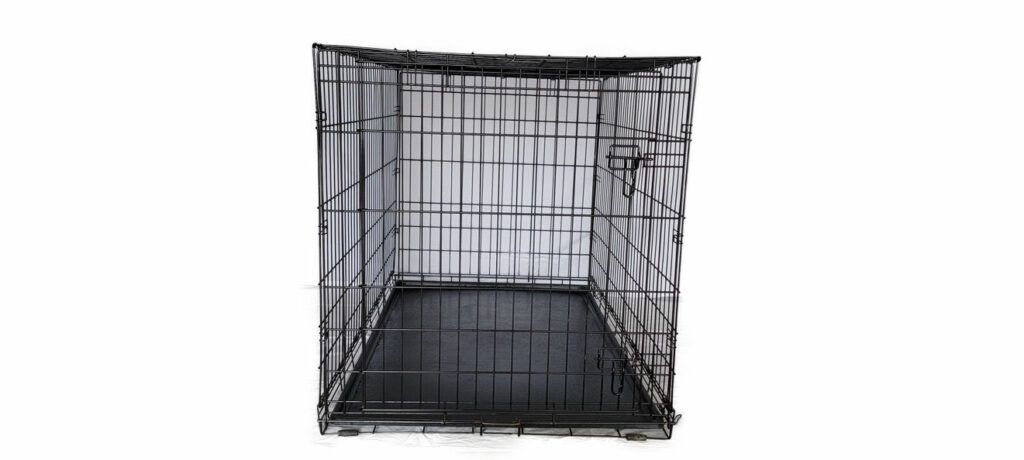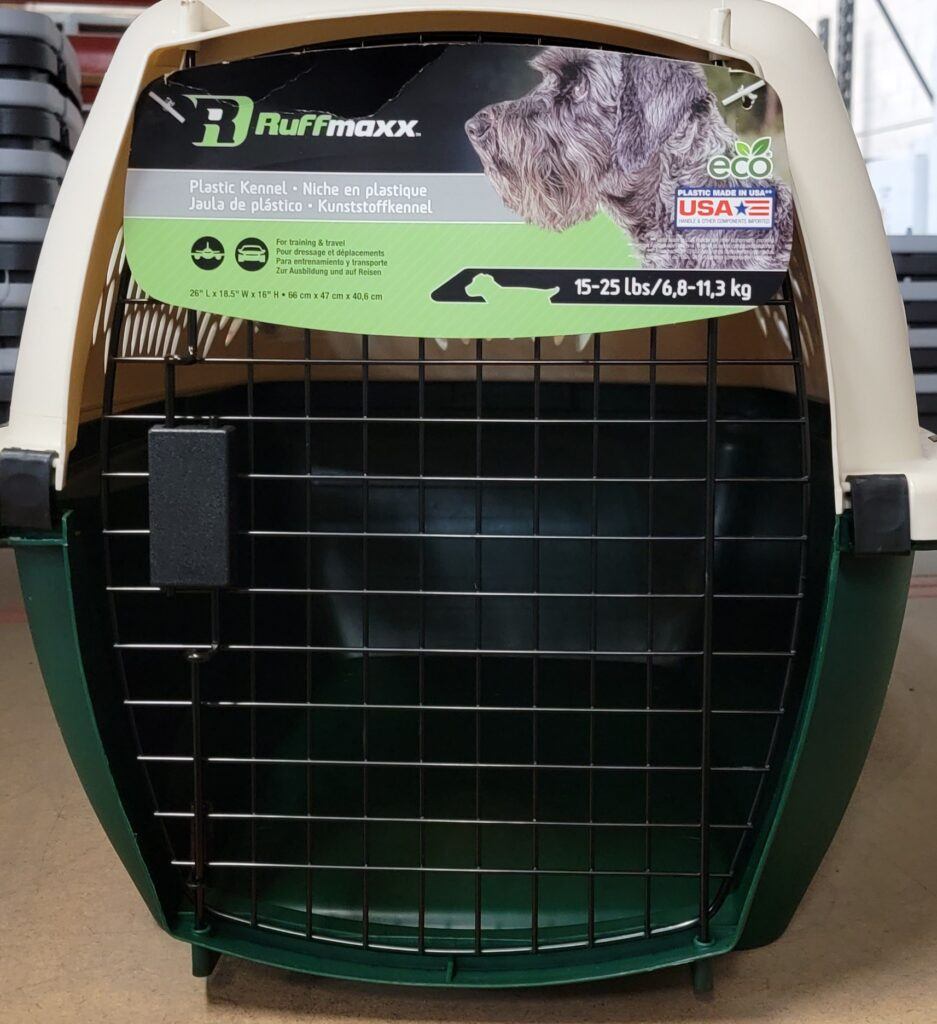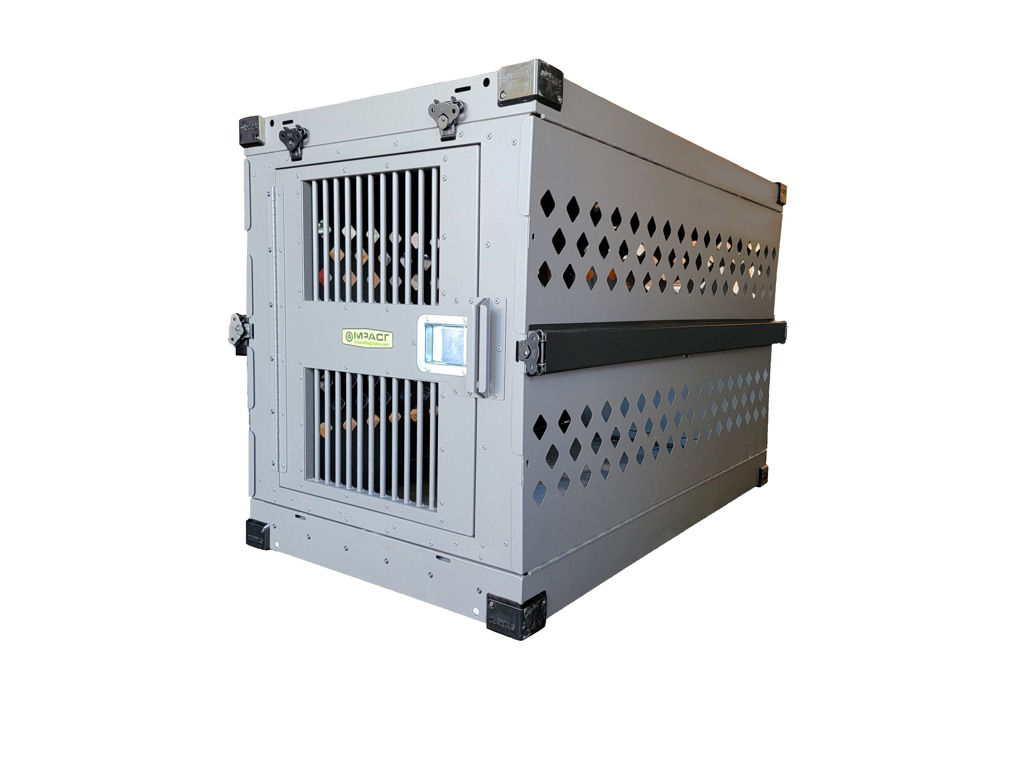All Rottweiler owners should consider crate training their Rottweiler puppy. The crate is useful for various reasons that are beneficial for your dogs well-being. The crate is your puppies bedroom so to speak. Dogs should always have a place to call their own. In the wild dogs retreat to their dens to rest, for shelter, and protection. Crates can also be used to manage your Rotti’s activities when inside the crate. Some dog owners use the crate as a housebreaking tool, or a way to safely transport their dogs by automobile.

I use a crate for all the above reasons mentioned. Besides the different uses for a crate, there are various types of crates on the market that can be purchased. If you are planning to use a crate for your puppy, plan on purchasing several over your Rotti’s growing cycle until adulthood. The best age to acclimate your Rottweiler to a crate, is when introduced to a new home. In many cases puppies have already been introduced to the crate before leaving the breeder.
Choosing a Crate for your Rottweiler
The type of crate you choose for your Rottweiler is matter of personal preference and budget. But before selecting a crate there are some things to consider before doing so. There are different variations of crates on the market to choose from. The different crates are:
- Wire crates
- Plastic crates
- Metal crates
- Fabric crates

When selecting a crate for your puppy, choose a crate (if possible) that is not too large. The requirement for the proper crate size allows your puppy to stand, lie, and turn around inside the crate. This is of course the rule for the adult size dog, but keep in mind that your Rottweiler will grow at an incredible rate over a short period.
The first crate that I purchased was the largest wire crate that is sold (XXL). If you are planning on housebreaking your puppy in the crate that you purchase, do not select a crate that your puppy can soil on one end, and sleep in on the other end.
I eventually purchased an additional wire crate which was the appropriate size for my Rottweiler to be housebroken, and to grow in as an adult dog. The key component of the new crate was a metal divider that could be used for housebreaking. The divider made the crate just large enough for my puppy to move freely, and rest. Selecting the right size crate the first time will make it easier on your finances.
Each style of crate does have its advantages and disadvantages. Some advantages are: metal crate are more durable and chew proof, plastic crates are lighter, wire/metal crates are collapsible. Some disadvantages are: metal crates are heavy, plastic crates are not chew proof, plastic crates are not as durable, plastic crates are not collapsible/portable, wire crates allow male dogs to pee through the large spaces.

Crate Training Basics
- Have your crate located in a designated place before bringing your puppy home.
- Introduce your puppy Rotti to his/her crate, by slowly offering treats, water or meals inside.
- Encourage play around the crate.
- Allow your puppy to explore the crate.
- Begin controlled rest periods in the crate.
Once your puppy has excepted the crate as a safe place to be, encourage your puppy inside the crate (use treats or toys) when he/she appears tired. Eventually your puppy will enter the crate on its own. When your puppy does so, close and latch the door. During this process remain visible to your puppy, this will build your puppies confidence.
When your puppy is comfortable going inside of the crate, secure your puppy inside for five minutes at a time for one-two days. If your puppy responds well to the first five minutes without a fuss, increase the time on a daily basis. Remember not to force your puppy to stay in the crate if any signs of anxiety exist.
When you can leave your puppy in the crate (while in your presence) for 30 minutes, drop the crate time down to 5-10 minutes while out of your dogs presence, working back up to 30 minutes. Your puppy may whine when you leave, but this is to be expected in the beginning. When your puppy whines do not rush to the rescue. In time the whining will subside, and eventually stop.
Make it a habit to use commands as you lead your puppy inside the crate, for example, “inside your crate,” or “on your bed.” Placing your puppy inside the crate should be done so for varying time periods. In the beginning your Rottweiler puppy will not have the ability to hold its pee/poop after feeding. Spare yourself the work if you decide to place your puppy in the crate after eating. After roughly 10-15 minutes your puppy will need to “go,” so make sure your puppy has had time to relieve him/herself when you have increased the amount of time in the crate.
Crate Safety
Some things to consider before introducing your dog to a crate, is crate safety. Rottweilers are powerful dogs as adults, so teaching them as puppies may lessen the damage they can cause to a crate, anything in the crate, and to themselves. So always:
- Remove your puppy’s collar when placed in the crate
- Watch your puppy to make sure it will not chew the bars
- Make sure your puppy rather lie on the crate bedding vs destroying it
- Make sure your puppy does not claw through the bars (this could result in a stuck paw)
- Remove toys that your puppy might destroy, and then ingest while alone
- If your Rotti has high anxiety issues, do not leave alone in the crate until you have consulted with a professional dog trainer
Final Thoughts
Remember the purpose of the crate is to provide a safe place for your puppy to sleep and travel in. The crate is sometimes used as a tool to housebreak your dog as well. However, the crate is not a tool to be used to imprison your puppy or dog. If you plan on housebreaking your Rottweiler it can be used as a tool. Do you travel with your dogs by car? If the answer is yes then I highly encourage you to purchase a crate for the safety of those in your vehicle, and the safety of your Rotti. While many view crates as a form of incarceration, science has shown that dogs are den animals and enjoy being in small spaces.
Crates are nothing more then a place of solitude, and security. A crate will provide a cozy retreat for your Rottweiler when tired and anxious. It does not have to be, nor should it be, a place for long periods of isolation and neglect.
Bibliography
” American Kennel Club.” https://www.akc.org/.
” AlphaDogBehaviour. “https://www.alphadogbehavior.co.uk/.
“DailyPaws. “https://www.dailypaws.com/.
Kelly, Michael. Housebreaking and Training Your New Puppy. T.F.H. Publications, Inc., 1991
